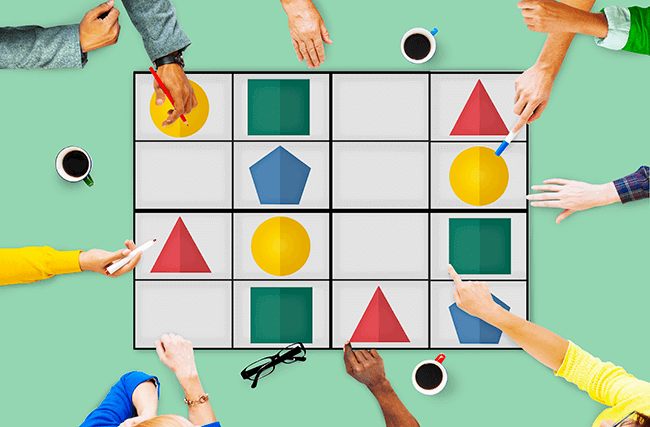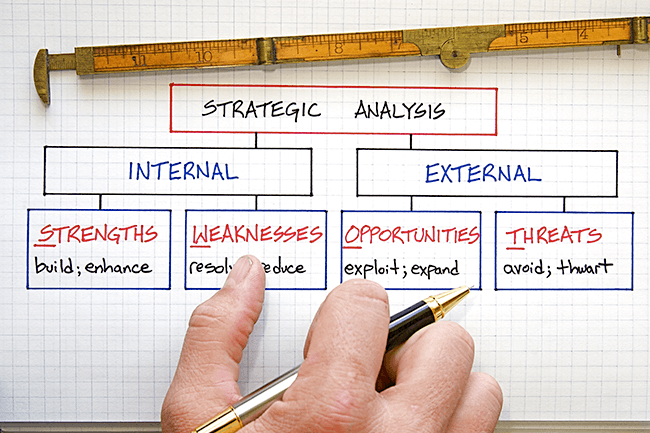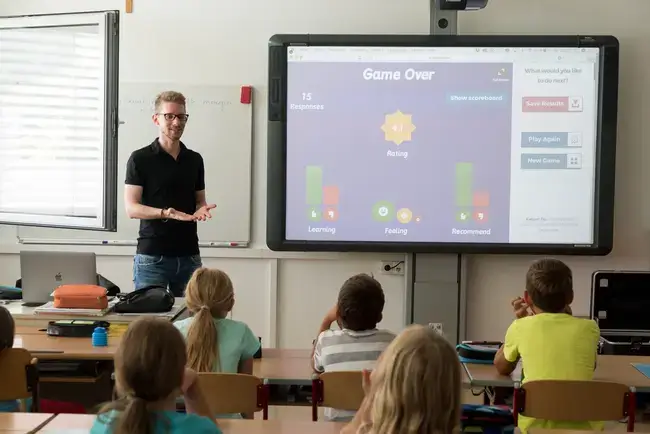The Art of Visual Storytelling with Digital Whiteboards

Key Takeaways
- Digital whiteboards revolutionize storytelling by merging traditional methods with advanced technology.
- Transition from static visuals to dynamic, multimedia-rich platforms.
- Interactive storytelling elements enhance engagement and immersion.
- Digital whiteboards are pivotal for creative and collaborative storytelling.
- Their interactive nature boosts engagement in both educational and business settings.
- Visual narratives effectively communicate through imagery and design, capturing attention in a media-saturated world.
- Storyboarding, narrative arcs, visual hierarchy, and multimedia elements are crucial in digital storytelling.
- Interactivity and annotation enhance audience engagement.
- Key features of digital whiteboards include real-time collaboration, multimedia integration, and interactive elements.
- Infinite canvas and export options expand storytelling possibilities.
- Effective use of digital tools like drawing, animation, and multimedia integration enriches storytelling.
- Applying design principles ensures coherent and visually appealing narratives.
Introduction to Visual Storytelling with Digital Whiteboards
Visual storytelling has undergone a remarkable transformation in the digital age, evolving from traditional methods to incorporate advanced technological tools. Among these, digital whiteboards have become a standout medium, revolutionizing the way narratives are created, shared, and experienced.
Evolution of Visual Storytelling in the Digital Age
The art of storytelling has always been dynamic, but the advent of digital technology has accelerated its evolution. In the past, visual narratives were often confined to static images or text. However, the digital era has expanded these boundaries significantly. The transition from simple drawings and photographs to sophisticated digital platforms has opened up new realms of possibilities.
Digital technology has not only enhanced the visual quality of stories but also introduced new dimensions to storytelling. Now, narratives can be more interactive, immersive, and engaging. The integration of multimedia elements like audio, video, and animation adds depth and richness to stories, making them more compelling than ever before.
The Emergence of Digital Whiteboards in Storytelling
In this evolving landscape, digital whiteboards have emerged as a pivotal tool for storytellers. They serve as dynamic canvases that blend art and technology, allowing for a level of creativity and collaboration that was previously unattainable. Digital whiteboards are incredibly versatile, suitable for a wide range of applications—from business presentations and marketing campaigns to educational content and creative storytelling.
One of the key strengths of digital whiteboards is their interactive nature. They allow storytellers to engage with their audience in real-time, making narratives more participatory and immersive. This interactivity is invaluable in both educational and business contexts, as it enhances understanding, retention, and engagement.
Basics and Importance of Visual Narratives
The core of effective digital whiteboard storytelling lies in visual narratives. These narratives harness the power of imagery, color, and design to convey messages in a way that words alone often cannot. The visual elements of a story can evoke emotions, clarify complex concepts, and make content more memorable.
Digital whiteboards amplify the power of visual narratives by providing tools to seamlessly integrate various visual and multimedia elements. Storytellers can use these tools to craft narratives that are not only visually appealing but also rich in content and context.
The importance of visual narratives in today’s fast-paced, media-saturated world cannot be overstated. They cut through the noise, capture attention, and communicate messages effectively. In educational settings, they can transform learning experiences, making them more engaging and accessible. In the business world, they can convey complex ideas succinctly and persuasively.
In conclusion, the integration of digital whiteboards into the realm of storytelling marks a significant advancement in how we tell and experience stories. By blending visual artistry with digital technology, these tools offer a new frontier for creators and educators, enabling them to tell stories that are not only heard but also seen and felt.
Key Concepts and Terminology in Digital Whiteboard Storytelling
Understanding the Language of Visual Storytelling
Storyboard: A storyboard is a sequence of drawings or images that outline the scenes of your story. In digital whiteboarding, storyboards are used to plan and visualize the narrative flow.
Narrative Arc: This refers to the traditional structure of a story, consisting of the introduction, rising action, climax, falling action, and resolution. Understanding how to structure your digital story around this arc is key.
Visual Hierarchy: This concept involves arranging visual elements in a way that implies importance, guiding the viewer’s attention through the story in a logical manner.
Multimedia Elements: These include any additional media used to enhance the story, such as images, videos, sound clips, and hyperlinks.
Interactivity: Refers to elements within the digital whiteboard that the audience can interact with, such as clickable links, quizzes, or embedded activities.
Annotation: Adding notes or comments to specific parts of the whiteboard to provide extra information or guide the audience’s understanding.
Essential Features of Digital Whiteboards for Storytelling
Real-time Collaboration: This feature allows multiple users to work on the same digital whiteboard simultaneously, regardless of their physical location. It’s especially useful for collaborative storytelling or group projects.
Multimedia Integration: The ability to integrate various forms of media into the digital whiteboard. This can include importing images, embedding videos, or adding sound effects to enhance the narrative.
Interactive Elements: Digital whiteboards offer various interactive tools, like drawing, dragging items, or creating polls. These can make the storytelling more engaging and participative.
Infinite Canvas: Many digital whiteboards provide an ‘infinite canvas,’ meaning you can expand the workspace as much as needed, allowing for complex and detailed stories without space constraints.
Templates and Backgrounds: Pre-designed templates and customizable backgrounds can help set the tone of your story and provide a structured layout for your narrative.
Export and Share Options: The ability to export your story in different formats or share it directly via a link enhances the accessibility and reach of your storytelling.
Understanding these key concepts and features is fundamental for anyone looking to leverage digital whiteboards in storytelling. By mastering the language and tools of visual storytelling, you can create more compelling, engaging, and effective narratives.
In-Depth Mechanics of Digital Whiteboard Storytelling
Utilizing Tools and Features for Maximum Impact
Digital whiteboards are packed with a variety of tools and features that, when used skillfully, can significantly enhance the storytelling experience. Here’s how you can make the most of these features:
Drawing Tools: Use the array of drawing tools to illustrate scenes, characters, or concepts. They can add a personal touch and make abstract ideas more tangible.
Animation: Some digital whiteboards offer basic animation features. Animating elements of your story can bring dynamism and excitement, helping to capture and retain the audience’s attention.
Templates and Pre-made Elements: Leverage templates and pre-made elements for efficient storytelling. They can serve as a starting point, saving time and ensuring a professional look.
Multimedia Integration: Embedding multimedia elements like videos, GIFs, or audio clips can add depth to your story, making it more immersive and engaging.
Real-Time Collaboration Tools: Use collaborative features to invite audience participation or co-create stories with others, adding diverse perspectives to your narrative.
Interactive Elements: Incorporating interactive elements like quizzes, polls, or clickable links can make your story more engaging and interactive.
Zoom and Navigation: Mastering zoom and navigation features can help in guiding the audience’s focus to different parts of the story at the right moments.
Design Principles for Digital Storyboarding
A well-designed storyboard is crucial for effective digital whiteboard storytelling. Here are some key design principles to consider:
Layout: Plan your storyboard layout carefully. Ensure it has a logical flow and that each frame leads seamlessly into the next.
Color Theory: Use colors strategically to set the tone, convey emotions, or highlight key elements of your story. Different color combinations can evoke different responses.
Visual Hierarchy: Establish a visual hierarchy to guide the viewer’s eye through your story in a way that makes sense. Use size, color, and placement to emphasize the most important elements.
Consistency: Maintain consistency in your design elements, such as fonts, colors, and imagery style, to create a cohesive and professional-looking narrative.
Simplicity and Clarity: While it’s tempting to use all the features available, it’s often best to keep your storyboard simple and clear. Overcomplicating the visual space can distract from the story itself.
Story Flow: Ensure your storyboard flows well. Each frame should contribute to advancing the story, building towards the climax, and resolving smoothly.
By understanding and applying these mechanics and design principles, storytellers can create more compelling and effective narratives on digital whiteboards.
Case Studies of Digital Whiteboard Storytelling in Business and Education
Transforming Business Presentations and Pitches
Digital whiteboards have become a game-changer in the business world, particularly in presentations and pitches. Their ability to add interactivity and visual appeal has made them indispensable tools for effective storytelling in a corporate setting.
Innovative Start-Up Pitches: A tech start-up used a digital whiteboard to pitch to investors, visually mapping out their business model, market analysis, and growth strategy. The interactive elements allowed for dynamic discussions, leading to a successful funding round.
Corporate Training Sessions: A multinational corporation implemented digital whiteboards in their training sessions. By visually and interactively demonstrating new policies and procedures, they reported a significant increase in employee comprehension and retention.
Marketing Strategy Presentations: A marketing agency used digital whiteboards to present complex strategies to clients. The use of multimedia elements to showcase market trends and consumer behavior insights made their presentations more engaging and convincing.
Enhancing Educational Curriculums with Visual Stories
In the realm of education, digital whiteboards have emerged as powerful tools for enriching curriculums with visual and interactive stories.
Interactive History Lessons: A high school history teacher used digital whiteboards to create interactive timelines of historical events, making lessons more engaging and helping students better understand the sequence and impact of historical occurrences.
Science Explorations: In a university setting, a science professor utilized digital whiteboards to visually break down complex scientific concepts and theories. This approach improved students’ understanding and fostered a more collaborative learning environment.
Language Learning Enhancement: An elementary school integrated digital whiteboards into language arts classes, where students could collaboratively build stories, enhancing their language skills and creativity.
Interactive Storytelling in Remote Learning and Work
The rise of remote learning and work has further highlighted the importance of digital whiteboards for interactive storytelling and collaboration.
Remote Team Project Management: A remote team used a digital whiteboard to manage a project, with team members collaboratively adding tasks, updates, and ideas. This approach not only kept the team aligned but also fostered a sense of collaboration and community.
Virtual Classroom Engagement: An online educator used digital whiteboards to turn traditional lectures into interactive sessions, where students could contribute in real-time, ask questions, and engage in group activities, leading to higher engagement and participation.
Online Workshops and Webinars: A business coach hosting online workshops used digital whiteboards to interactively engage with attendees, conducting live brainstorming sessions and collaborative problem-solving exercises.
These case studies demonstrate the versatility and effectiveness of digital whiteboards in both business and educational contexts. By facilitating interactive storytelling and visual engagement, they have become vital tools for communicating complex ideas in a more digestible, engaging, and effective manner.
Practical Application of Digital Whiteboards in Storytelling
Strategies for Crafting Compelling Digital Narratives
Crafting compelling narratives with digital whiteboards involves a blend of creativity, technical know-how, and an understanding of your audience. Here are some strategies to help you create engaging digital stories:
Narrative Development:
- Start with a Clear Message: Every story should have a clear message or objective. Determine what you want your audience to learn, feel, or do after experiencing your story.
- Storyboarding: Before diving into the digital whiteboard, sketch out a storyboard. This helps in planning the sequence of your story and ensures a coherent flow of ideas.
- Incorporate Story Arcs: Utilize classic story arcs to structure your narrative, creating a setup, conflict, and resolution that keeps the audience engaged.
Visual Design:
- Use Visual Cues: Leverage colors, shapes, and icons to convey different parts of your story or to highlight key points.
- Balance Text and Imagery: While digital whiteboards allow for rich multimedia experiences, it’s important to find the right balance between text and visuals to avoid overwhelming your audience.
- Consistent Aesthetic: Maintain a consistent visual style throughout your story. This includes using a cohesive color scheme, consistent font styles, and similar imagery types.
Audience Interaction:
- Engage Your Audience: Use interactive elements like polls, questions, or collaborative activities to keep the audience engaged.
- Feedback Loops: Allow for and encourage feedback during or after your story. This not only engages the audience but also provides valuable insights for future stories.
Best Practices in Educational and Business Contexts
In Education:
- Interactive Learning: Utilize the interactive capabilities of digital whiteboards to involve students in the learning process. This can include collaborative problem-solving or interactive quizzes.
- Visual Aids for Complex Concepts: Break down complex subjects into digestible visual parts. Diagrams, flowcharts, and mind maps can be particularly effective.
- Continuity in Learning: Use the digital whiteboard’s saving and sharing features to provide students with access to the material for review and further study.
In Business:
- Engaging Presentations: Move beyond static slideshows. Use digital whiteboards to create dynamic presentations that can adapt to the flow of discussion.
- Collaboration in Brainstorming: Leverage the collaborative features for brainstorming sessions, allowing team members to contribute ideas in real-time.
- Data Visualization: Utilize the whiteboard to visually represent data, making complex information more accessible and understandable.
By applying these strategies and best practices, storytellers can effectively leverage digital whiteboards to create narratives that are not only visually appealing but also deeply engaging and informative, whether in an educational setting or a business context.
Comparative Analysis: Digital Whiteboards vs. Traditional Storytelling Methods
Efficiency and Engagement Comparisons
Digital Whiteboards:
- Efficiency: Digital whiteboards streamline the storytelling process with tools for quick editing, instant sharing, and easy collaboration. They allow storytellers to adapt content on the fly and integrate multimedia elements effortlessly.
- Engagement: These platforms excel in audience engagement. Interactive features like polls, quizzes, and real-time collaboration draw the audience into the story, making it a two-way interaction.
Traditional Methods:
- Efficiency: Traditional storytelling, while rich in personal touch and nuance, often lacks the same level of efficiency. Changes to the narrative require more time and resources, and the distribution of content is typically slower and less flexible.
- Engagement: Traditional methods rely heavily on the skill of the storyteller to engage the audience. While they can be deeply immersive, they lack the interactive elements that digital tools provide, potentially leading to lower engagement in certain audiences, especially those accustomed to digital interfaces.
Creativity and Flexibility in Different Mediums
Digital Whiteboards:
- Creativity: Digital whiteboards open up a myriad of creative possibilities. Storytellers can blend text, images, videos, and sounds to create a multi-sensory experience, offering a richer narrative than text or speech alone.
- Flexibility: These tools are highly adaptable. They can be used across various contexts, from education and business to creative arts. Storytellers can easily modify their narratives to suit different audiences or objectives.
Traditional Methods:
- Creativity: Traditional storytelling has its unique creative strengths, often rooted in personal charisma and the power of the spoken word. It thrives on human elements like voice modulation, facial expressions, and body language.
- Flexibility: While traditional storytelling is adaptable in terms of content, its format remains relatively constant. It’s less accommodating when it comes to integrating diverse media types or allowing for audience participation.
In summary, while traditional storytelling methods have their unique charm and effectiveness, digital whiteboards offer enhanced efficiency, engagement, and flexibility. They cater to a broader range of storytelling needs in the modern world, where audiences seek interactive and multimedia experiences. The choice between digital and traditional methods depends on the context of the storytelling, the composition of the audience, and the objectives of the narrative.
Pros and Cons of Using Digital Whiteboards for Storytelling
Advantages in Engagement and Flexibility
Advantages:
- Enhanced Engagement: Digital whiteboards captivate audiences with interactive elements like clickable areas, quizzes, and real-time polls. This interactivity transforms passive listeners into active participants.
- Increased Flexibility: They offer unparalleled flexibility in storytelling. Storytellers can easily modify content, structure, and presentation style to suit different audiences or adapt to feedback on the spot.
- Multimedia Integration: The ability to incorporate videos, images, sounds, and animations enriches the narrative, providing a multisensory experience that can cater to various learning styles.
- Collaborative Opportunities: Digital whiteboards facilitate collaboration, enabling multiple storytellers or participants to contribute to the narrative, regardless of their location.
- Scalability and Reach: Stories created on digital whiteboards can be shared widely with minimal effort, reaching a global audience.
Technical Limitations and Accessibility Concerns
Challenges:
- Dependence on Technology: Their functionality hinges on technology, which can be a double-edged sword. Technical glitches, software updates, or compatibility issues can disrupt the storytelling process.
- Learning Curve: Some users may find digital whiteboards complex and intimidating, requiring time and training to use effectively.
- Accessibility Issues: Not all digital whiteboard platforms are fully accessible to users with disabilities. Inadequate accessibility features can exclude portions of the audience.
Addressing the Digital Divide in Storytelling
Impact and Strategies:
- Digital Divide Impact: The digital divide can significantly impact the effectiveness of digital whiteboard storytelling. Those without access to reliable internet or modern digital devices may be excluded from these storytelling experiences.
- Strategies for Inclusivity:
- Offering Offline Alternatives: Provide downloadable versions of the story or transcripts for those with limited internet access.
- Using Low-Bandwidth Options: For live storytelling sessions, offer low-bandwidth options or audio-only versions to accommodate those with slower internet connections.
- Training and Support: Provide training resources or workshops to help less tech-savvy individuals become comfortable with digital whiteboards.
- Partnering with Community Centers: Work with libraries, schools, or community centers to provide access to necessary technology for those who lack it at home.
In conclusion, while digital whiteboards offer a range of benefits for storytelling, including enhanced engagement and flexibility, they also come with technical and accessibility challenges. Addressing these challenges is crucial to ensure that digital whiteboard storytelling is inclusive and effective for all audiences.
FAQs on Utilizing Digital Whiteboards for Visual Storytelling
What are digital whiteboards, and how are they used in storytelling?
Digital whiteboards are interactive displays or software that allow users to create, edit, and share visual content in real-time. In storytelling, they are used to visually narrate stories, often combining text, images, drawings, and multimedia elements. They facilitate a dynamic and engaging way to tell stories, making them ideal for educational, business, or creative purposes.
Can digital whiteboards be used for collaborative storytelling?
Absolutely! One of the key features of digital whiteboards is their ability to support real-time collaboration. Multiple users can contribute to the story simultaneously, regardless of their location, making it an excellent tool for group storytelling projects or brainstorming sessions.
What kind of equipment do I need to use a digital whiteboard for storytelling?
The requirements can vary based on the platform or software. Generally, you’ll need a computer or a tablet with internet access. Some digital whiteboard applications can also be used with interactive displays or smartboards, especially in classroom or conference room settings.
Are there specific techniques for storytelling on digital whiteboards?
Storytelling on digital whiteboards often involves a mix of traditional narrative techniques and digital visual elements. Techniques such as storyboarding, using color schemes for emotional impact, and incorporating interactive elements like hyperlinks or multimedia files are commonly used.
How can I keep my audience engaged when using a digital whiteboard for storytelling?
Engage your audience by making your story interactive – ask questions, include polls, or invite them to contribute to the story. Utilize multimedia elements like videos or sound clips, and ensure your narrative is visually appealing and easy to follow.
Can digital whiteboard stories be saved or shared?
Yes, most digital whiteboard platforms allow you to save your work in various formats and share it online. You can typically export your story as a PDF, image file, or video, or share it directly via a link.
What are common challenges when using digital whiteboards for storytelling, and how can I overcome them?
Common challenges include technical issues, learning how to use the software’s features effectively, and ensuring your story is coherent and engaging. To overcome these, practice using the software beforehand, plan your story carefully, and always test your narrative before presenting it to your audience.
Are there any best practices for using digital whiteboards in an educational setting?
In educational settings, it’s crucial to make your stories relevant and educational. Use interactive elements to make learning fun, ensure content is age-appropriate, and align your storytelling with learning objectives.
How can I measure the success of my digital whiteboard storytelling?
Success can be measured through audience feedback, engagement levels during the storytelling session, and, in educational contexts, through assessments or quizzes to gauge information retention.
Where can I find resources to improve my digital whiteboard storytelling skills?
Many online platforms offer tutorials and resources on digital whiteboard storytelling. Additionally, joining online communities or forums dedicated to digital storytelling can provide valuable tips and inspiration.
Actionable Steps and Guidelines for Digital Whiteboard Storytelling
In the realm of digital whiteboard storytelling, assessing and evaluating effectiveness is key to understanding the impact of your narrative and refining your approach. Various methods can be employed to gauge the success of your storytelling efforts, from feedback mechanisms to analytics tools and performance metrics.
Feedback Mechanisms:
- Audience Surveys and Questionnaires: Post-storytelling surveys or questionnaires can provide direct insights from your audience. Questions can range from gauging their understanding of the narrative to their level of engagement and enjoyment.
- Interactive Polls: During or after the storytelling session, interactive polls can be used to collect immediate audience reactions and thoughts. This real-time feedback is invaluable for adjusting your approach in future sessions.
- Focus Groups: Conducting focus group discussions allows for more in-depth feedback. This method is particularly useful for understanding how different elements of your digital whiteboard storytelling resonated with the audience.
Analytics Tools:
- Engagement Analytics: Many digital whiteboard platforms offer built-in analytics tools that track engagement metrics such as time spent on the board, interaction with specific elements, and participation in activities. These metrics offer a quantitative measure of audience engagement.
- Heat Maps: Heat maps show which areas of the digital whiteboard were most interacted with, indicating the most engaging parts of your story.
- Retention Metrics: For educational storytelling, retention metrics can be gathered through follow-up quizzes or assessments to gauge how much information the audience retained.
Performance Metrics:
- Completion Rates: In scenarios like online courses or training sessions, tracking completion rates can indicate how compelling and understandable your storytelling was.
- Behavioral Changes: In business contexts, evaluating the impact of storytelling on audience behavior or decision-making can be a crucial performance metric.
- Learning Outcomes: Especially in educational settings, assessing the achievement of specific learning outcomes post-storytelling can provide a clear measure of effectiveness.
Continual Improvement:
- Iterative Feedback Loop: Incorporate feedback and analytics into an iterative process where each storytelling session is refined based on the insights gained from the previous one.
- Customized Assessments: Tailor your evaluation methods to the specific goals of your storytelling session, whether it’s educational, promotional, or for team collaboration.
In conclusion, by effectively utilizing these assessment and evaluation methods, storytellers can gain a comprehensive understanding of the impact of their digital whiteboard narratives. This not only enhances the storytelling experience but also ensures that the intended message is effectively communicated and retained by the audience.
Conclusion
As we reach the end of our exploration into the dynamic world of visual storytelling with digital whiteboards, it’s clear that this medium is more than just a technological innovation; it’s a transformative tool that bridges the gap between traditional storytelling and the digital future. The versatility, interactivity, and creative freedom offered by digital whiteboards have opened up new horizons in both educational and business contexts, making complex ideas more accessible and engaging than ever before.
From the historical evolution of visual communication to the practical applications in various fields, digital whiteboards have proven their value as powerful storytelling devices. They encourage collaboration, foster engagement, and enhance learning experiences in ways that traditional methods cannot match. The case studies and expert insights discussed highlight the profound impact these tools have on audience engagement and message retention.
Looking ahead, the future of digital whiteboard storytelling is bright with potential. As technology continues to evolve, so too will the ways in which we tell and consume stories. By embracing these changes and continuing to innovate, storytellers can create more immersive, interactive, and impactful narratives that resonate with diverse audiences.
In conclusion, whether you’re an educator looking to enrich your teaching methods, a business professional aiming to captivate your audience, or simply someone passionate about the art of storytelling, digital whiteboards offer a canvas limited only by your imagination. As we move forward in this digital age, let us harness the power of these tools to tell stories that inform, inspire, and transform.














